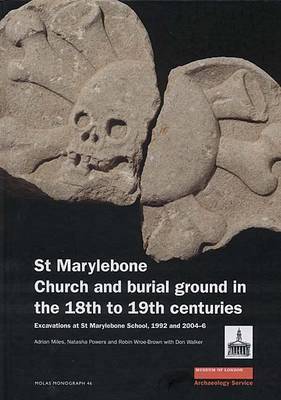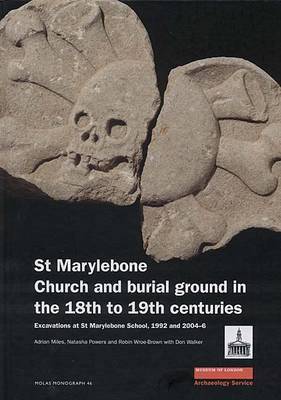
- Afhalen na 1 uur in een winkel met voorraad
- Gratis thuislevering in België vanaf € 30
- Ruim aanbod met 7 miljoen producten
- Afhalen na 1 uur in een winkel met voorraad
- Gratis thuislevering in België vanaf € 30
- Ruim aanbod met 7 miljoen producten
Zoeken
St Marylebone Church and Burial Ground in the 18th to 19th Centuries
Excavations at St Marylebone School 1992 and 2004-6
Adrian Miles, Natasha Powers, Robin Wroe-Brown, Don Walker
€ 26,45
+ 52 punten
Omschrijving
St Marylebone parish grew from humble beginnings on the city's margins to become, in the 18th and 19th centuries, one of the wealthiest in London, home to the elite and fashionable. The small parish church on Marylebone High Street, built in brick in 1742 on the site of the medieval church, was inadequate for such a congregation and was superceded in 1817 by today's far grander edifice on Marylebone Road. Archaeological investigations in 1992 showed that the graveyard - levelled in the 1930s for a playground for St Marylebone Church of England School for Girls - lay substantially undisturbed beneath the playground. In 2004 plans to build an underground sports hall allowed excavation of a sample of the burial ground and part of the church itself. Most of the 350+ burials recorded were from the graveyard; some were in family vaults and others inside the church crypt. The archaeological results and detailed osteological analysis of 301 individuals are combined with documentary research into the parish and its population, including the woman who preferred parrots to men, the artist who died of lockjaw and the Reverend headmaster and his 'most wicked and abandoned wife'. This volume is one of the largest and most comprehensive studies of a post-medieval London cemetery.
Specificaties
Betrokkenen
- Auteur(s):
- Uitgeverij:
Inhoud
- Aantal bladzijden:
- 172
- Taal:
- Engels
- Reeks:
- Reeksnummer:
- nr. 46
Eigenschappen
- Productcode (EAN):
- 9781901992793
- Verschijningsdatum:
- 12/11/2008
- Uitvoering:
- Hardcover
- Formaat:
- Genaaid
- Afmetingen:
- 216 mm x 297 mm
- Gewicht:
- 975 g

Alleen bij Standaard Boekhandel
+ 52 punten op je klantenkaart van Standaard Boekhandel
Beoordelingen
We publiceren alleen reviews die voldoen aan de voorwaarden voor reviews. Bekijk onze voorwaarden voor reviews.











